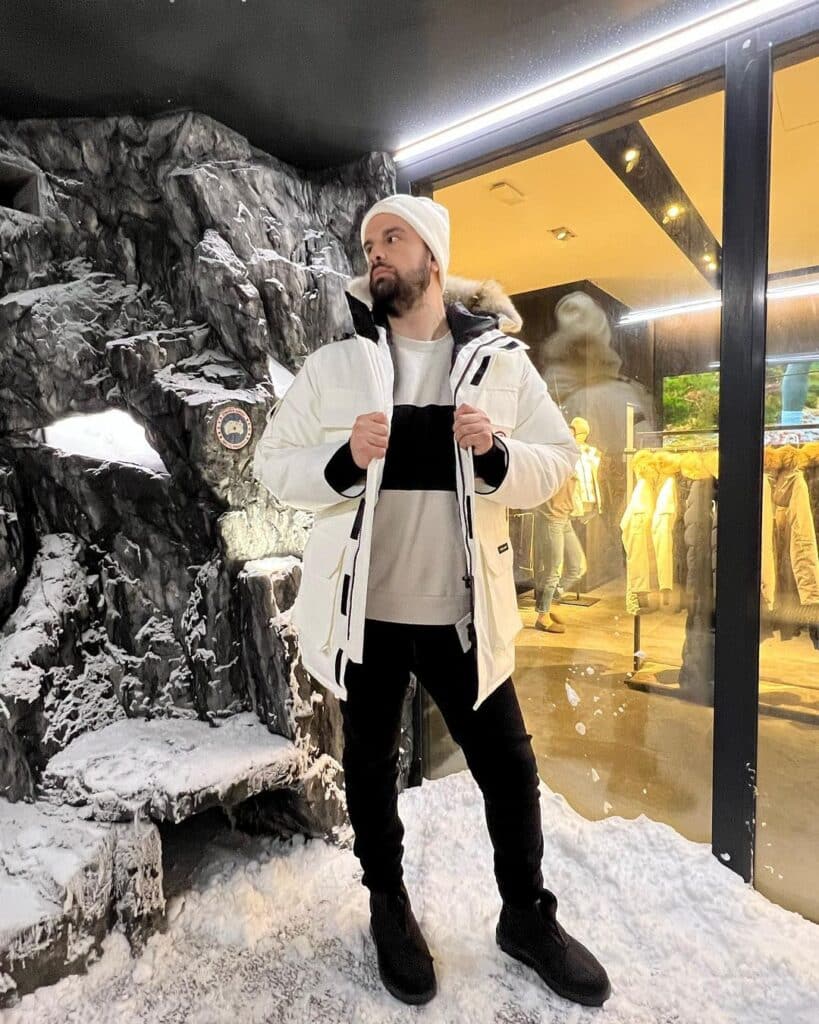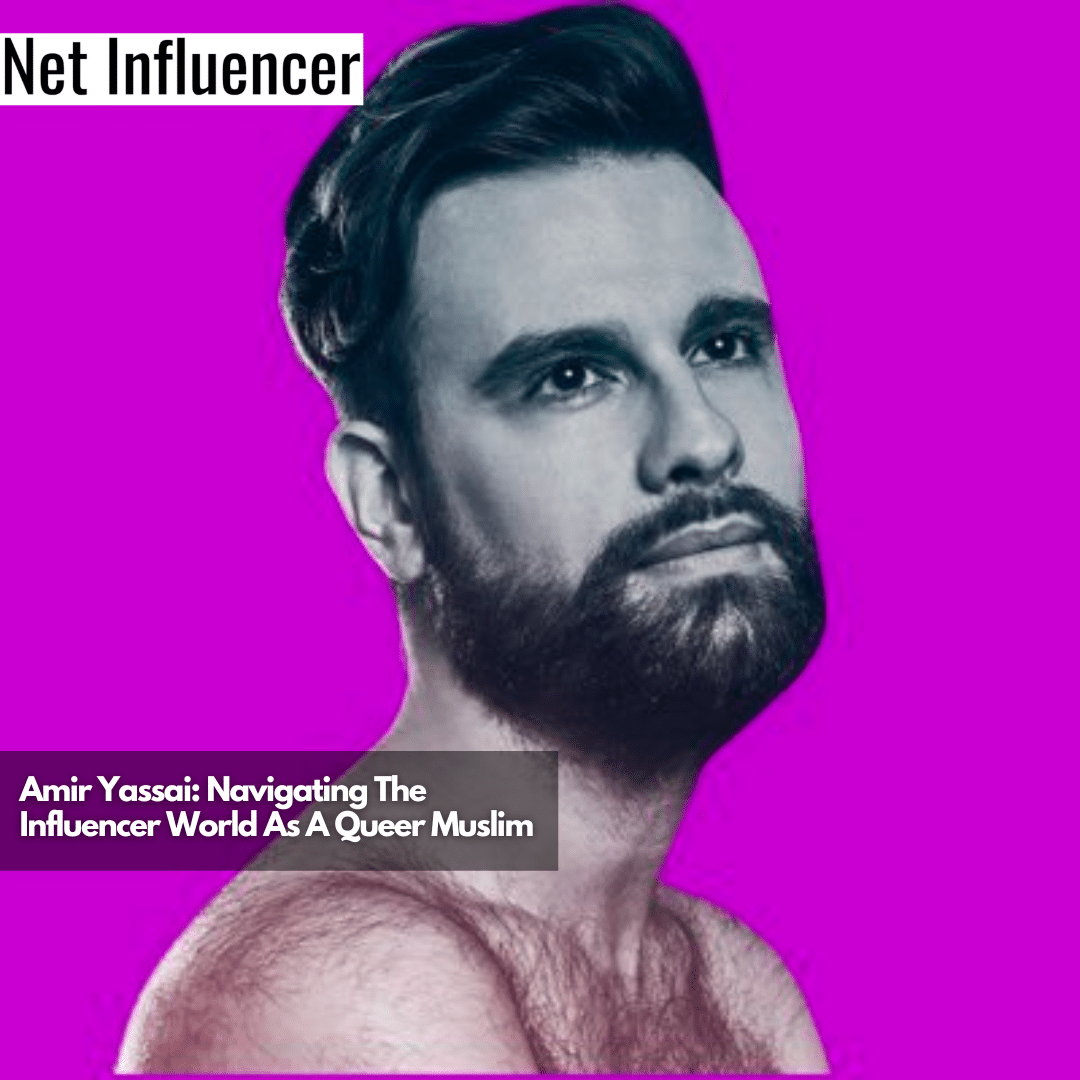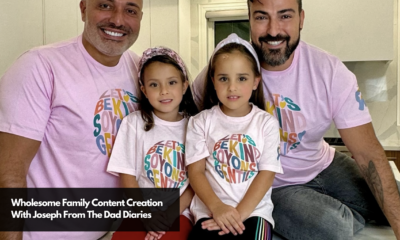Influencer
Amir Yassai: Navigating The Influencer World As A Queer Muslim
In this in-depth interview, influencer Amir Yassai shares his unique journey from being a Hollywood publicist to a celebrated TikTok star. Yassai, a queer Muslim, discusses the challenges he overcame, from dealing with cyberbullying to struggling with representation in the media. Through authentic storytelling and engaging content, he has created a space for himself and continues to inspire a new generation of influencers.
In this in-depth interview, influencer Amir Yassai shares his unique journey from being a Hollywood publicist to a celebrated TikTok star. Yassai, a queer Muslim, discusses the challenges he overcame, from dealing with cyberbullying to struggling with representation in the media. Through authentic storytelling and engaging content, he has created a space for himself and continues to inspire a new generation of influencers.
Can you introduce yourself and tell us a bit about your background?
Amir Yassai is a content creator and podcaster. Before entering social media, he worked as a publicist for 15 years in Hollywood with many A-lister stars, such as Michel B. Jordan, Melissa McCarthy, Gwen Stefani, and the Kardashians.
He has a lot of experience in the entertainment industry, but back then, it was behind the camera, pitching and creating an entire show.
Were there any specific events or influences in your early life that you believe paved the way for your journey as an influencer?
“I’ve never been the kind of person who does like role models or people I look up to because they really weren’t many queer Muslims. Persian people out there really just kind of repping for the culture,” Amir says.
But growing up, Amir watched Shahs of Sunset, a reality show that followed six American-Persian friends living in Los Angeles. This show was inspiring for Amir because he got to see people who spoke his language and looked like him but were a little more modern.
“That kind of gave me an outlet because I was always taught that there were only three professions. And so, for me, I was like, ‘How do I get to entertainment without offending my parents?'”
Can you take us through the key turning points in your journey to becoming a well-known influencer?
The pandemic paved the way for Amir’s journey to becoming a content creator. During this time, many people were bored at home — Amir included. One of his friends pushed him to join TikTok, but he hesitated at first, thinking that the platform was only for the young, and he was 37 years old at that time.
“But when I got on there, I started doing the dances and lip-syncs in every video. And the comments were like, ‘You’re old, you didn’t do a good job,’ and I was like, ‘I have to be authentic to who I am. I know they’re rough people, but I have to be true to who I am,'” Amir says.
He started talking about celebrity news and his career as a publicist. Because of this shift, his content started getting millions of views. The entire experience also taught him one thing, telling us, “What I learned was just be yourself, like talk about what you know instead of trying to be [someone else].”
How do you decide the themes and topics for your content, and how have they evolved over time?
During the pandemic, Amir was posting at least seven videos a day. He was shooting tons of content in one day, like 50 to 60 videos in one day, most of which were focused on entertainment news.
Because of the nature of his videos, Amir had to be current and up-to-date. “Sometimes, the videos I’d shoot on a Sunday was no longer news on Wednesday, so I wouldn’t post it,” he adds.
He also learned how to edit and make little clips to ensure he only posts a minute-long video. This required him to talk fast and look for pressing topics. He also did Instagram Lives back then, giving updates to his audience about their favorite celebrities.
“Doing all those interviews and posting the news helped me learn a lot, and then it started evolving. I started talking more about my sexuality and religion. That was not the content people always wanted, but I wanted to do that,” Amir explains.

He followed where his heart was leading him, but people started looking for the entertainment news he had previously made. “I’m not e-news or a big entertainment company; I’m only one person, so I had to do what I love, which is to talk about who I am,” Amir says.
Can you share a bit about the process you go through when creating and refining the content you post?
Amir gets inspiration for his content by scrolling through different social media platforms for hours. He looks at a lot of content and always tells people when he helps them set up their social media accounts to engage with the app to get a million followers.
He gives us more insight by telling us, “A lot of people just want a million followers, but they don’t want to do the work of commenting, liking, and reposting. I’m like, ‘You’re not going to grow if you don’t interact with the environment; people won’t know who you are.'”
People knew Amir from the comment sections, which is why it’s important for him to engage with the audience. This is also what made people follow him on social media.
“I think that was a big step. I think that just naturally, you start evolving and see what inspires you. And for me, what I do, I’ve made myself. I know that I have a lot of facial expressions. So I just react to videos, and I don’t even talk anymore, and they really do well,” Amir says.
Why did you choose TikTok as your main platform over others? What specific characteristics of TikTok appeal to you?
Amir was on Instagram at first but later realized that the audience there wasn’t as excited on TikTok. He recalls commenting on every video and selling merchandise on Instagram, but none of his followers would ever greet him on the street when he saw them in person.
But his audience on TikTok was different and way better. “They would get excited because they felt like they were a part of my journey and my growing. So, I think the TikTok fans are a lot more diehard than on Instagram,” he explains.
In addition, Amir realized that his content on Instagram wasn’t doing well. Because of this, he started creating reaction videos on TikTok and found out that it was so much easier as he didn’t have to talk and spend so much time and effort making the videos — from adding the graphics and captions.
Can you share one of the biggest challenges you’ve faced in your career as a content creator and how you navigated it?
Towards the end of the pandemic, Amir saw the number of his video views drop, and his videos were getting blocked and even taken down. He was also bullied more during this time and even received tons of death threats. Some people were even reporting his account for child abuse.
“I wasn’t able to go live for six months, which is how I was making my money during the pandemic because every time I went live, people would pay me. They say I was promoting pornography; I don’t know why but I couldn’t get out of it,” Amir says.
He knew someone from TikTok and emailed him about what happened. Unfortunately, this person wasn’t able to do anything and advised Amir to wait for his videos to get reuploaded. This response heightened Amir’s frustration.
He did an interview with the LA Times and talked to other queer creators about his situation. TikTok started blocking more of their videos, telling them that they didn’t want them to get bullied. “If there’s a lot of hate comments, they take that video down to prevent us from getting bullied. But then you’re ruining my profile, so it was disheartening,” Amir says.
He stopped posting for a couple of months because he felt like if he posted something, it would only get 0 to 20 views. Although he wasn’t creating and posting videos solely for the views, knowing that his content didn’t reach his followers was discouraging.
“The way I dealt with it was like, ‘Okay, I’m not going to post for a month,’ and then I was like, ‘No, I want to post, and I have things to say,'” Amir says. He kept posting until he got 200 views, and then week after week, the numbers continued to increase. Now, when he receives hate comments for any of his videos, he doesn’t respond and just blocks the account.
How do you deal with the pressure and expectations that come with having such a large online following?
“I think my responsibility is I don’t need to be perfect. When I started having more followers, I was like, ‘That puts a lot of pressure on me as young people are following me,’ I don’t want to be negative or rude, but I want people to see that I’m upset about homophobia or racism, and it’s important for people to see that” Amir says.
In the realm of content creation, how would you suggest new influencers find their unique voice and style?
Amir advises new influencers to write down five things people would say about them. “If you interviewed five of my friends and you asked them what they would say about me, they’d say, ‘He’s really ridiculous, funny, loud, and loves entertainment.’ These are the five things that people would say about me,” Amir shares.
All of Amir’s videos show a little bit of his personality — he can be a little ridiculous, tries to do a TikTok dance, or even wear a silly outfit. He aims to entertain people because he knows life isn’t always easy.
How do you see the influencer marketing space evolving, and what role do you think influencers will play in that evolution?
“I know a lot of friends who own brands, and I think micro influencers — people with 10,000 to 15,000 followers — have a high comment rate and a lot of engagement happening. That’s what you really want because there are a lot of profiles with millions of followers but not a lot of engagement,” Amir explains.
For him, a lot of companies are missing out because they’re hiring the biggest influencers without even considering their engagement rates. With micro-influencers, companies can spend a quarter of their marketing budget yet still see better results as micro-influencers get high engagement rates.
In addition, micro-influencers have that sense of community among their followers, which is crucial for successful brand deals.
As a seasoned influencer, how have you navigated the balance between maintaining authenticity and marketing products or services?
Amir doesn’t do a lot of paid partnerships on Instagram because they eventually feel too gimmicky. He’s more open to brand deals on TikTok because they can do them more seamlessly. “I think that in TikTok, there’s more opportunity for some business growth as far as marketing goes,” he adds.
What trends or changes do you foresee in the influencer and content creation space for the rest of the year?
“A lot more live streams like for the new year. I think people are really going to want to promote stuff live because I’ve watched enough live videos, and people don’t really do that today,” Amir says. “I think podcasting will be a big thing for podcasters, too.”
Amir predicts podcasting will boom this year as it creates a great environment to promote products and services; plus, it’s very easy to do — anyone can do a 10- to a 15-second video in between podcast episodes to promote.
“I’ve noticed a lot of influencers are doing a lot of red-carpet stuff, so I feel that’s another evolution,” he continues.
Amir also sees more monetization opportunities for creators for the rest of the year. When he was still starting in the content creation space, he basically did everything for free, from brainstorming to editing content. But now, creators can ask their followers to subscribe or pay for an app before they can access their content.
Do you have any specific goals or projects lined up for the rest of the year that you’d like to share?
“I’m working on an unscripted show that I would be a host of,” Amir says. He’s looking forward to this project because he has always wanted a talk show and thinks that as he grows more in the industry, this dream has slowly become a possibility.
If there’s one message you’d like your audience to take away from your content, what would it be?
“That they’re enough. Everyone is enough, and sometimes, we’re too much, and sometimes, we’re all over the place, but you’re enough,” Amir says.
His experiences — getting verified and having a million views on his videos — didn’t necessarily fix all of his problems. These successes brought excitement to his life but didn’t really fix anything. He wants his followers to know that they’re enough, no matter where they are in life right now.
What key piece of advice would you give to creators who are just starting out and aiming for success in the digital space?
“You got to know your why. If you’re starting a profile, why are you starting it?” Amir says. For him, his why was always about educating people through humor and helping them get over their shame.
In every video that Amir does, even if he is talking about Britney Spears, he’ll always make sure to touch the topic of shame. This has been his focus since he started, and he never diverted to talking about celebrities’ custody battles, divorce, and any other topics.
He advises all aspiring creators to find their way and stay authentic and real. “People need to look up the word authentic because many people think it’s fake like I love everyone. No, authenticity is not loving everyone; you can’t love everybody,” Amir continues. He mentions that authenticity is also about calling people out, especially when they’re doing bad behavior on an app or social media.



















